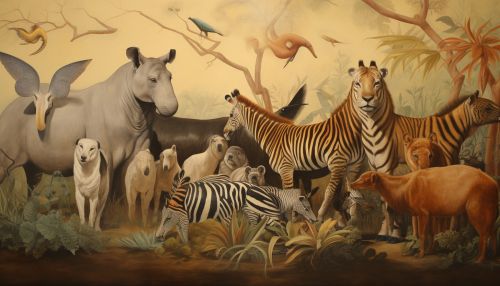Chronobiology
Introduction
Chronobiology is a field of biology that examines periodic (cyclic) phenomena in living organisms and their adaptation to solar- and lunar-related rhythms. These cycles are known as biological rhythms. Chronobiology comes from the Greek words χρόνος (chronos, meaning "time"), and biology, which pertains to the study, or science, of life. The related terms chronomics and chronome have been used in some cases to describe either the molecular mechanisms involved in chronobiological phenomena or the more quantitative aspects of chronobiology, particularly where comparison of cycles between organisms is required 1.
Biological Rhythms
Biological rhythms are oscillations of living organisms that can manifest in various ways, such as cell division, heart rate, and sleep patterns. These rhythms can be affected by external cues, such as light and temperature. The study of these rhythms falls under the purview of chronobiology 2.


Classification of Biological Rhythms
Biological rhythms can be classified according to their period length, the time it takes for one complete cycle. The three primary types of biological rhythms are ultradian rhythms, circadian rhythms, and infradian rhythms 345.
Ultradian Rhythms
Ultradian rhythms have a period shorter than 24 hours. Examples of ultradian rhythms include the 90-minute REM cycle, the 4-hour nasal cycle, or the 3-hour cycle of growth hormone production.
Circadian Rhythms
Circadian rhythms have a period of approximately 24 hours. The most notable example of a circadian rhythm is the sleep-wake cycle, associated with which are many other rhythms such as eating and drinking patterns and secretion of certain hormones.


Infradian Rhythms
Infradian rhythms have a period longer than 24 hours. An example of this is the human menstrual cycle.
Chronobiology in Animals
Chronobiology is not limited to humans; it is a fundamental aspect of the biology of virtually all organisms. Animals, including insects, fish, birds, and mammals, all exhibit circadian rhythms in their behavior and physiology. These rhythms can influence feeding patterns, mating behaviors, migration, and many other aspects of animal life 6.


Chronobiology in Plants
Plants also exhibit biological rhythms. Perhaps the most well-known example is the opening and closing of flowers at certain times of the day. This behavior, known as nyctinasty, is controlled by the plant's circadian clock. Other plant processes influenced by biological rhythms include leaf movement, growth, germination, and the production of photosynthetic products 7.


Human Applications of Chronobiology
Chronobiology has many applications in human society, particularly in medicine and psychology. Understanding the biological rhythms of the human body can help in the treatment of various disorders, including sleep disorders, mood disorders, and certain types of cancer. It can also have implications for work schedules, particularly for shift workers 8.
See Also
References
1. "Chronomics and Continuous Ambulatory Blood Pressure Monitoring". Springer. 2016. ISBN 978-4-431-56053-6. 2. Refinetti, Roberto. "Circadian Physiology". CRC Press. 2016. ISBN 978-1-4987-2930-4. 3. Lloyd, David; Rossi, Enrico. "Ultradian Rhythms in Life Processes". Springer. 2013. ISBN 978-1-4471-1996-8. 4. Roenneberg, Till. "Internal Time: Chronotypes, Social Jet Lag, and Why You're So Tired". Harvard University Press. 2012. ISBN 978-0-674-04961-8. 5. Nelson, Randy J. "An Introduction to Behavioral Endocrinology". Sinauer Associates. 2011. ISBN 978-0-87893-620-5. 6. Alcock, John. "Animal Behavior: An Evolutionary Approach". Sinauer Associates. 2013. ISBN 978-0-87893-966-4. 7. Taiz, Lincoln; Zeiger, Eduardo. "Plant Physiology". Sinauer Associates. 2010. ISBN 978-0-87893-866-7. 8. Reddy, Akhilesh B.; O'Neill, John S. "Healthy clocks, healthy body, healthy mind". Trends in Cell Biology. 2010. doi:10.1016/j.tcb.2009.11.001.
